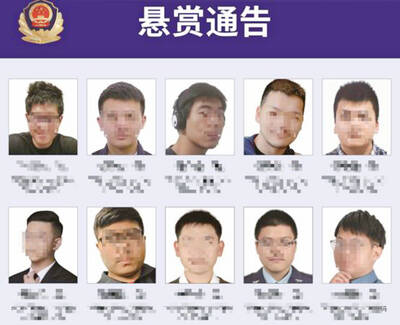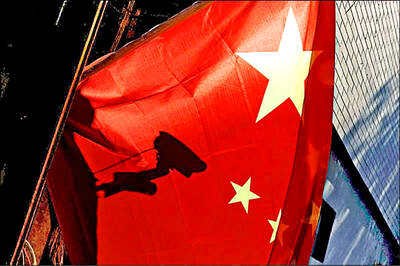It happens time after time. People understand Europe the way they've been introduced to it -- the usual tourist meccas, the attractions on a thousand postcards. Then they remember Belgium, the little country, they passed through a few days ago. It seems beautiful, it's practically next-door to Paris, London and Amsterdam, and they have 24 hours to explore it before heading home. Two hours later, they are in love with Belgium!
Because it is the best kept secret in Europe. Visiting medieval cities, quaint towns, gothic cathedrals and town halls, castles and carillons will keep you busy during the day. At night go to a pub, there are more than 350 delicious beers to chose from. The reputation of our gourmet food makes the French jealous and it is almost impossible to find chocolates as good as ours.
Whether you like culture, theme parks, safaris, sandy beaches, kayaking, festivals or pageants, come visit us. We have it all.
Belgium so many and they are so close to each other that you can visit more than one a day if you are really in a hurry. But we recommend that you take your time, choose a comfortable seat at a sidewalk terrace on the main square and let the town cast its spell on you.
Glamorous gothic cathedrals, townhalls, gabled guildhouses, rich museums will tempt you. The cultural heritage of architecture, paintings, tapestries and sculpture reflect the intense intellectual and artistic life of these cities which were important trading centers as far back as the 12th century.
Belgium
Belgium, a kingdom no bigger than Maryland, is Europe in a nutshell, multicultural and multilingual. Flanders in the north, a flatland criss-crossed by canals, is proud of its great art cities, Antwerp, Bruges and Ghent. To the south in Wallonia, you will find the rolling hills of the Ardennes, numerous castles, and the cities of Liege, Namur, and Tournai. Its capital city of Brussels is one of the world's great cosmopolitan cities, home to both the European Union and NATO, as well as a wealth of international trade and finance companies.
Belgium's history has always been linked to both commercial and cultural exchange, and much of its character is due to its role as the great meeting place of Western Europe. Traces of the Austrians, Spanish, French and Dutch can still be seen in its architecture and in the lifestyle of its people. You will see superb examples of art and architecture past and present - Romanesque, Gothic, Baroque, Nouveau. Cities teem with museums, historical buildings, theatre, music and festivals.
Much has been said about Belgium's hospitality and it's all true. Because of the country's location as an international center of commerce and culture, Belgians are at ease with travelers from all over the world. They are proud of their homeland, and anxious to help get to know it better. You'll find them always personable, cooperative and courteous.
The Flemish speak Dutch and the Walloons speak French. In Brussels, the capital, both languages are spoken. But to make it easy, everybody speaks English, albeit with an accent.
Folklore is an important part of life in Belgium. Carnivals, festivals, pageants, plays and religious processions are held all year long. Almost any occasion is cause for a parade and almost every parade includes a giant or two.
Somehow, Belgium has maintained a low-key approach to all of this international sophistication. It is a country for connoisseurs, but connoisseurs who do not take themselves too seriously. Because the Belgians certainly do not.
Belgium is a small cozy country, everything is within easy reach, transportation is great and travel is a breeze.
You can eat famous fries while gliding on the canals of Bruges or enjoy a delicious waffle while gazing at the Grand' Place of Brussels, the most beautiful square in Europe. You may visit the castle of a leader of the crusades, explore the most spectacular grottos in Han or get really scared in the ancient torture room of the medieval castle of Ghent.
Brussels
Brussels, capital of Europe is a cosmopolitan city, with a liveliness and an appeal that are intimately related to its role as a crossroads for all of Europe. Architectural styles range from Gothic cathedrals and churches to the gracious classical facades of the Palais des Nations, the Royal Palace and to the many art nouveau and art deco houses in the comfortable neighborhoods where the Bruxellois live.
The heart of Brussels and the place to start getting to know the city is the Grand'Place.
This historic square, lined with exuberantly ornate guild houses and focused on the Gothic heights of the Hotel de Ville, is widely held to be one of Europe's finest.
The Grand'Place is also, as it has been for centuries, the focal point of the city's social and civic life. The people of Brussels gather here for their most important ceremonies and festivals, for the traditional bird market on Sunday mornings, and -- perhaps most importantly -- for no task more pressing than to sit, have a beer, and let the world pass.
Every neighborhood has its own market, as Brussels is a city of markets: the bird market, the flower market, the antique market, the flea market, and the horse market. Vendors bring fresh produce from nearby fields, cheeses made in farms and abbeys; hams cured in the Ardennes, flowers and potted plants, chickens, rabbits and fresh caught fish, shrimp and mussels from the North Sea.
At the corner of the Rue de l'Etuve and the Rue du Chene, stands the fountain of Manneken-Pis. The statue has long been a beloved figure in Brussels, having come to be regarded as an honored citizen of the town. Kings, Presidents, and celebrities have given costumes to the Manneken-Pis. He now has a wardrobe of more than 250 outfits which are housed in the Musee Communal.
To the east of the Grand'Place, the ground rises toward the upper town where the Royal Palace and the House of Parliament sit. In between these two is a formal park with fountains in the French style. It is here that the Belgians fought the Dutch for their independence. Slightly to the south is the Place du Grand Sablon, the center of exquisite antique galleries and sumptuous restaurants.
Just to the north of the Grand Sablon is the Royal Museum of Fine Arts, which comprises the Museums of Ancient Art and Modern Art. Both possess enormous collections featuring many outstanding works. Among the rooms not to be missed is the collection of Flemish paintings from the 15th and 16th centuries. All of the major artists are well represented including Robert Campin, Rogier van der Weyden, Hugo van der Goes, Dirk Bouts, Hans Memling, and particularly, Peter Breughel the Elder.
There is an entire room devoted exclusively to Breughel's work, including his Landscape with the "Fall of Icarus." The national sons, Peter Paul Rubens and his disciple, Anthony Van Dyck have an impressive presence.
There is no shortage of entertainment events in Brussels, and in keeping with the city's cosmopolitan outlook, these are widely varied. They range from the annual Queen Elizabeth Music Competition, which draws aspiring classical musicians from all over the world, to the annual Jazz Festival in Brussels which attracts legendary jazz stars to the city.
The Theatre Royal de la Monnaie consistently offers first class opera and ballet. In the Palais des Beaux Arts, symphony and chamber music concerts are programmed year-round. There are cinemas with American films in their original version, nightclubs and discos to satisfy even the most energetic. Don't forget the folklore and pageantry integral to an understanding of Belgium, with the Ommegang Festival, the first Thursday in July or the Parade of the Giants in May.
Mussels in Brussels are a must! They are prepared in a variety of ways and are a bargain in season. All Belgian food is of course delicious. Proportions are huge, so try to save room for dessert. Chocolates, waffles and cookies are everywhere. And after all, you can always go on a diet in Paris.
Beers
Belgium has enjoyed an unparalleled reputation for its specialty beers since the Middle Ages. Connoisseurs favor our beers for their variety, real flavor and character. Belgians are the greatest beer drinkers in Europe, exceeding even the English and the Germans.
There are almost as many beer styles as there are breweries in the small kingdom of Belgium. Discover medieval Belgium through our cafe and breweries. Meet friendly people who speak your language.
Beers worth trying. Belgian beers come in a range of colors -- from pale to black - -- and a range of types. The Lambic is yeasty, Gueuze is fruity, Kriek is sweet, and Trappiste is brewed by monks in monasteries throughout Belgium.
Blanche: wheat beer -- light and trendy, cloudy and smooth, a little on the sweet side. This thirst-quenching beer combines character and flavor with a lowish alcohol content.
Gueuze: a blend of young and aged lambic beers. A complex beer, dosed with yeast to stimulate a secondary fermentation in the bottle.
Trappiste: rich dark ales produced according to centuries-old methods by monks in five monasteries; Chimay, Orval, Rochefort, Westmalle and Westvleteren.
Lambic: a beer naturally fermented by contamination of wort by airborne yeasts.
Faro: a Lambic for the faint of heart. A sweetened variety with some of the flavor but little of the intensity of other Lambics.
Kriek: a beer made with cherries(!), refreshing in summer.
Brown Beers: brewed in Flanders, these beers are hearty and full-flavored.
Red Beers: produced in West Flanders from red barley. These beers are aged in oak. They are fruity, sweet and sour, and are very thirst-quenching.
Chocolates
From the halls of Montezuma to the stores in Belgium, no flavor has ever rivaled chocolate in universal appeal. It has been the food of champions, a lure for lovers, the indulgence of the rich and later, the favorite of the masses.
Belgium produces 172,000 tons of chocolate per year and has 2,130 chocolate shops in her country.
The Belgian Chocolate Praline is not to be confused with the American praline. Pralines in Belgium are sublime chocolate confections, the highest achievement of the chocolate maker art: A beautifully sculpted chocolate shell concealing a center of filling explodes with a surprise of texture and flavor in your mouth. Many chocolatiers still make their pralines by hand. Every town and even small villages have chocolate stores with luxurious pralines.
Food
Eating in Belgium is always a feast, the Belgians wouldn't have it otherwise! They are very demanding when it comes to quality and proud of their cuisine.
Visitors are invited to set off in search of gastronomic delights and works of craftsmen who shape the exceptional objects, which make a happy contribution to the artistry of the table.
In Brussels good tables with an excellent reputation made our capital one of the most tasteful in the world. There are countless small inns and restaurants nestled in the beautiful countryside of the Ardennes and in the Flanders, where regional dishes can be enjoyed.
Belgian waffles have been an important part of the Belgian diet for centuries. They always signal a celebration of some sort, even if only to break up the doldrums of a long winter afternoon. The country offers different kind of waffles. Today waffles are baked and eaten all year round in coffeehouses, tearooms, and at home.
Waffles as a meal... well, perhaps, you might do as we do in Belgium, and have a waffle party for your supper.

‘ABUSE OF POWER’: Lee Chun-yi allegedly used a Control Yuan vehicle to transport his dog to a pet grooming salon and take his wife to restaurants, media reports said Control Yuan Secretary-General Lee Chun-yi (李俊俋) resigned on Sunday night, admitting that he had misused a government vehicle, as reported by the media. Control Yuan Vice President Lee Hung-chun (李鴻鈞) yesterday apologized to the public over the issue. The watchdog body would follow up on similar accusations made by the Chinese Nationalist Party (KMT) and would investigate the alleged misuse of government vehicles by three other Control Yuan members: Su Li-chiung (蘇麗瓊), Lin Yu-jung (林郁容) and Wang Jung-chang (王榮璋), Lee Hung-chun said. Lee Chun-yi in a statement apologized for using a Control Yuan vehicle to transport his dog to a

Taiwan yesterday denied Chinese allegations that its military was behind a cyberattack on a technology company in Guangzhou, after city authorities issued warrants for 20 suspects. The Guangzhou Municipal Public Security Bureau earlier yesterday issued warrants for 20 people it identified as members of the Information, Communications and Electronic Force Command (ICEFCOM). The bureau alleged they were behind a May 20 cyberattack targeting the backend system of a self-service facility at the company. “ICEFCOM, under Taiwan’s ruling Democratic Progressive Party, directed the illegal attack,” the warrant says. The bureau placed a bounty of 10,000 yuan (US$1,392) on each of the 20 people named in

The High Court yesterday found a New Taipei City woman guilty of charges related to helping Beijing secure surrender agreements from military service members. Lee Huei-hsin (李慧馨) was sentenced to six years and eight months in prison for breaching the National Security Act (國家安全法), making illegal compacts with government employees and bribery, the court said. The verdict is final. Lee, the manager of a temple in the city’s Lujhou District (蘆洲), was accused of arranging for eight service members to make surrender pledges to the Chinese People’s Liberation Army in exchange for money, the court said. The pledges, which required them to provide identification

INDO-PACIFIC REGION: Royal Navy ships exercise the right of freedom of navigation, including in the Taiwan Strait and South China Sea, the UK’s Tony Radakin told a summit Freedom of navigation in the Indo-Pacific region is as important as it is in the English Channel, British Chief of the Defence Staff Admiral Tony Radakin said at a summit in Singapore on Saturday. The remark came as the British Royal Navy’s flagship aircraft carrier, the HMS Prince of Wales, is on an eight-month deployment to the Indo-Pacific region as head of an international carrier strike group. “Upholding the UN Convention on the Law of the Sea, and with it, the principles of the freedom of navigation, in this part of the world matters to us just as it matters in the